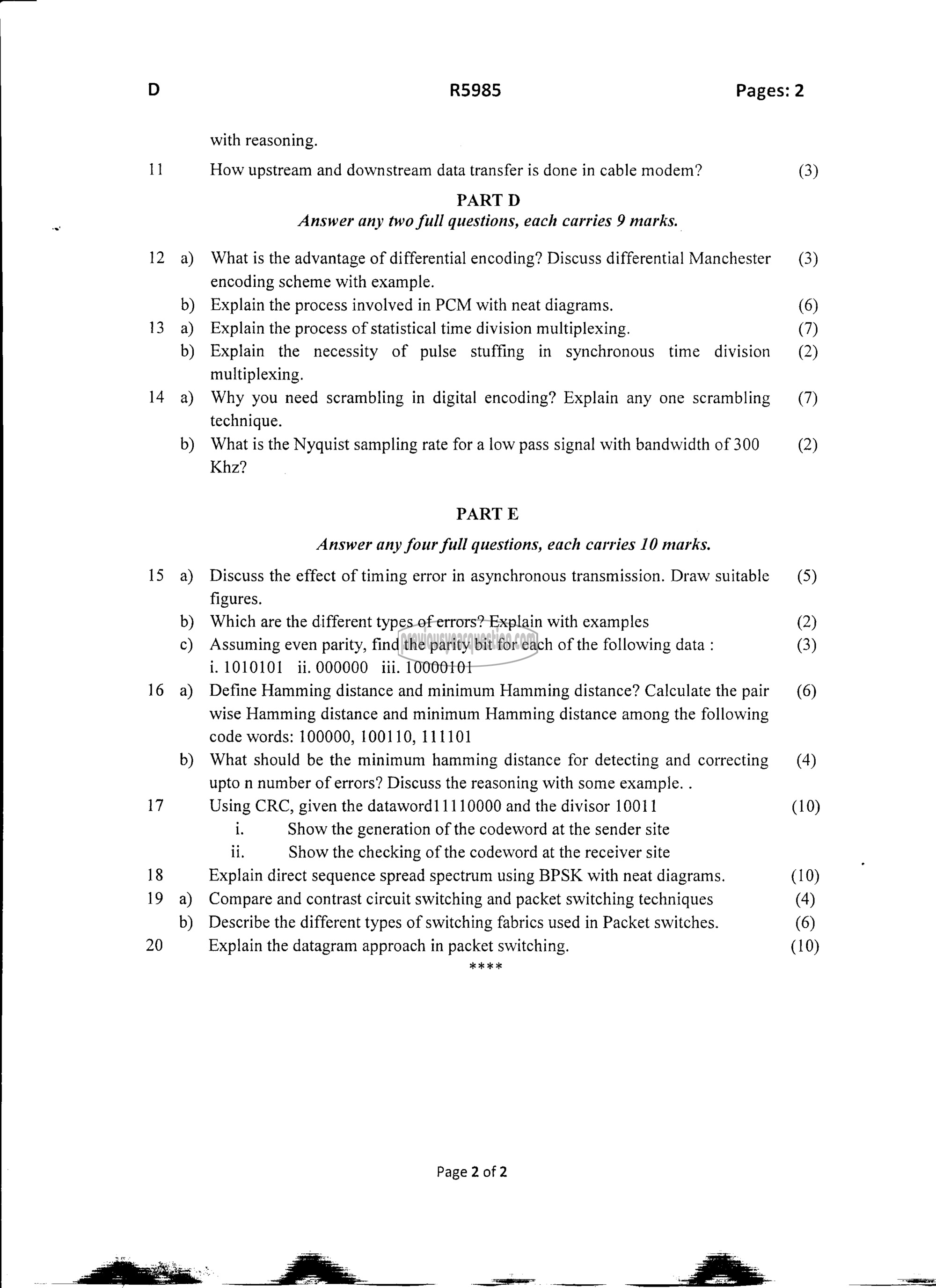APJ ABDUL KALAM TECHNOLOGICAL UNIVERSITY Previous Years Question Paper & Answer
Semester : SEMESTER 5
Subject : Data Communication
Year : 2018
Term : DECEMBER
Branch : COMPUTER SCIENCE AND ENGINEERING
Scheme : 2015 Full Time
Course Code : CS 307
Page:2
11
13
14
15
b)
a)
b)
R5985 Pages: 2
with reasoning.
How upstream and downstream data transfer is done in cable modem?
PART D
Answer any two full questions, each carries 9 marks.
What is the advantage of differential encoding? Discuss differential Manchester
encoding scheme with example.
Explain the process involved in PCM with neat diagrams.
Explain the process of statistical time division multiplexing.
Explain the necessity of pulse stuffing in synchronous time division
multiplexing.
Why you need scrambling in digital encoding? Explain any one scrambling
technique.
What is the Nyquist sampling rate for a low pass signal with bandwidth of 300
Khz?
PARTE
Answer any four full questions, each carries 10 marks.
Discuss the effect of timing error in asynchronous transmission. Draw suitable
figures.
Which are the different types of errors? Explain with examples
Assuming even parity, find the parity bit for each of the following data :
1. 1010101 1. 000000 iii. 10000101
Define Hamming distance and minimum Hamming distance? Calculate the pair
wise Hamming distance and minimum Hamming distance among the following
code words: 100000, 100110, 111101
What should be the minimum hamming distance for detecting and correcting
upto n number of errors? Discuss the reasoning with some example. .
Using CRC, given the dataword11110000 and the divisor 10011
i. Show the generation of the codeword at the sender site
ii. Show the checking of the codeword at the receiver site
Explain direct sequence spread spectrum using BPSK with neat diagrams.
Compare and contrast circuit switching and packet switching techniques
Describe the different types of switching fabrics used in Packet switches.
Explain the datagram approach in packet switching.
ಸೇರ KR
Page 2 of 2
(3)
(3)
(6)
(7)
(2)
(7)
(2)
(5)
(2)
(3)
(6)
(4)
(10)
(10)
(4)
(6)
(10)
